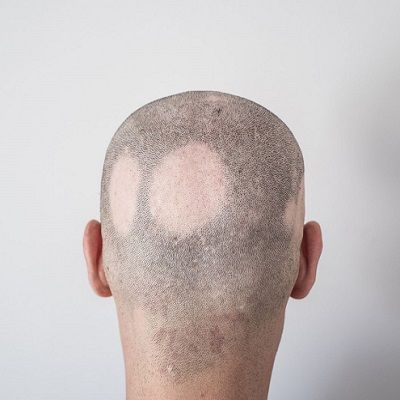
Alopecia, or hair loss, can be temporary or permanent and can affect only your scalp or the entirety of your body. It could be brought on by hereditary factors, hormonal changes, illnesses, or a natural aspect of aging. Even though anybody can lose hair on their head, males are more likely to do so.
Baldness often refers to a significant loss of scalp hair. The most frequent cause of baldness is hereditary hair loss as people age. Some people choose to let their hair loss develop naturally without medication or coverup. With the use of hats, scarves, cosmetics, or hairstyles, some individuals may conceal it. Others decide to use one of the treatments on offer like Alopecia Areata Treatment in Dubai to stop additional hair loss or encourage growth.
Kinds of Alopecia:
Areata Alopecia (patchy):
The coin-sized (often round or oval) spots on the scalp or other parts of the body where hair grows are known as alopecia areata (patchy). Although this kind has the potential to progress into either alopecia totalis (hair loss that affects the entire scalp) or alopecia Universalis (body-wide hair loss), it often remains spotty.
Persistent Alopecia Areata Patches:
Patchy scalp hair loss that lasts for a long time without ever progressing to more severe alopecia areata types like totalis or Universalis is the hallmark of persistent patchy alopecia areata.
A Complete Baldness:
The entire scalp loses hair as a result of alopecia totalis and leads the patients to get Alopecia Areata Treatment in Dubai & Abu Dhabi.
All-over Hair Loss:
Alopecia totalis is less severe than alopecia universalis. With this kind, the entire scalp, the face (including the eyebrows and eyelashes), and the rest of the body experience hair loss (including pubic hair).
Diffuse Areata Alopecia:
The scalp’s hair suddenly and unexpectedly thins due to diffuse alopecia areata. Because it resembles other types of hair loss, such as telogen effluvium or male or female pattern hair loss, it can be challenging to diagnose.
Ophiasis Hair Loss:
Ophiasis alopecia areata is a distinctive pattern of hair loss that includes band-like areas on the sides and lower back of the head (referred to as the occipital region). Due to its slower response to therapy, ophiasis alopecia areata might be more challenging to manage.
Telogen Effluvium:
Telogen effluvium is another name for the alopecia areata of the coin kind. The difference between this type and the others is that the hair thins out and, rather than coming out in sections, scatters across the skin. Rarely, excessive stress, abrupt hormonal changes, and drug side effects can cause comparable hair loss patterns in other parts of the body and patients decide to get Alopecia Areata Treatment in Dubai.
Men’s Patterns:
Male pattern baldness frequently starts with hair loss at the top of the head or a receding hairline above the forehead. Whenever impacted, the sides and bottom of the head often lose hair last.
Women’s Pattern:
In contrast to male pattern baldness, female pattern baldness often starts with hair loss along the midline or obliques. Although there may be increased loss along the dividing line in this form, total baldness is uncommon.
Treatment Options:
Injections of Platelet-Rich Plasma (PRP):
The treatment for androgenetic alopecia is PRP. A kind of hair loss in which the hair follicles contract. The procedure for this therapy is taking a sample of the patient’s blood and spinning it in a centrifuge. The blood is spun quickly, causing the components to separate. After that, the platelets are removed for injection. PRP has proteins and growth factors that assist to repair damaged hair follicles and promote hair growth.
Activa Regenera:
Micrografts are used in the Regenera Activa hair treatment to stimulate the hair follicles. In this procedure, scalp micrografts are taken from the patient and implanted into the therapy region together with growth factors. In addition to treating androgenic alopecia, Regenera Activa slows down the process of hair loss and stimulates natural hair growth.
Medication:
Treatments for hair loss using drugs, including minoxidil, can stop hair loss and promote hair growth and is an essential part of Alopecia Areata Treatment in Dubai.
- Note: Do not take any medicine without the consultation of a dermatologist.
Cellular Treatment:
Cellular treatment In order to cure hair loss and thinning hair, ACell is typically used in conjunction with PRP Hair restoration treatment. It includes promoting hair growth by utilizing the patient’s blood.
Hair Restoration Using a Laser:
It emits photons into the scalp tissue and is further known as cold laser therapy or red light therapy. Weak cells then take in the photons, which promotes the development of hair.
Transplanting Hair:
In order to do this form of Alopecia Areata Treatment in Dubai, hair follicles from the side or back of the head are removed and transplanted to the targeted treatment region.
Nutrition:
Others frequently view hair that is thick or elegant as a sign of health or beauty. Like every other part of the body, hair needs a variety of nutrients in order to be strong and healthy. Numerous dietary deficiencies are linked to hair loss. Here is some food that can help with hair loss:
- Omega-3 fatty acids in particular, which are unsaturated fatty acids, are crucial for healthy skin, hair, and nails.
- In fact, vitamins B6, B12, and folic acid are crucial for healthy hair.
- Despite the fact that many individuals do not consume enough of them, proteins are crucial for healthy hair.
- Magnesium, zinc, and biotin are traces of essential minerals that can have an impact on hair; as a result, it is wise to take a daily multivitamin.
Bottom Line!
These various forms of alopecia areata can all be treated in a variety of ways. Make an appointment with your doctor to determine the type of alopecia areata you may have and the best method of therapy. Find out more about Alopecia Areata treatments in Dubai & Abu Dhabi as well as the tools.











